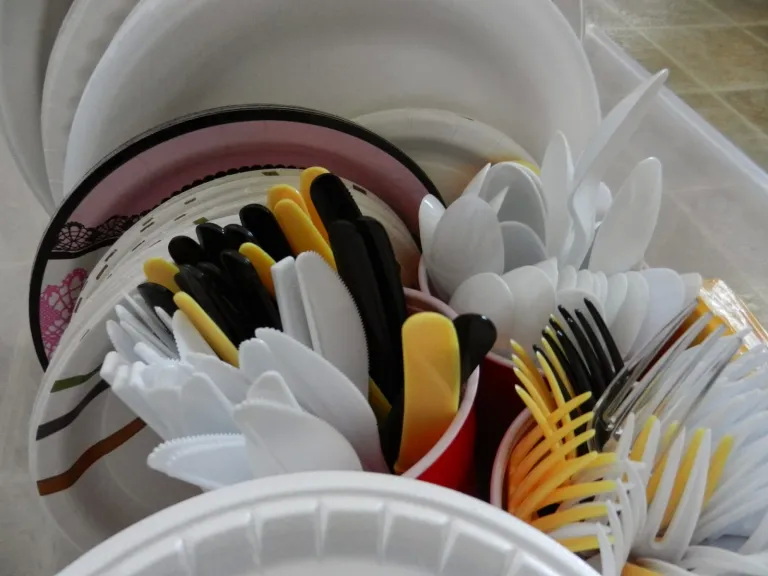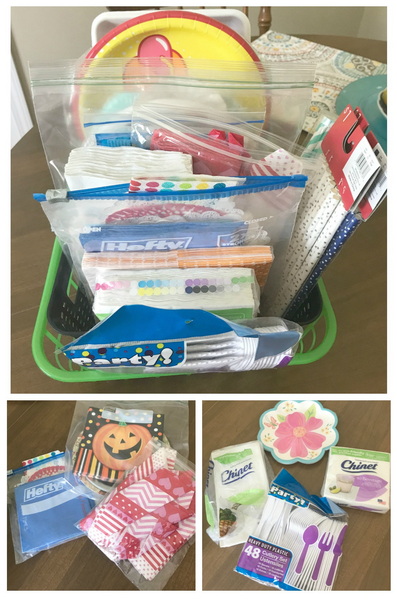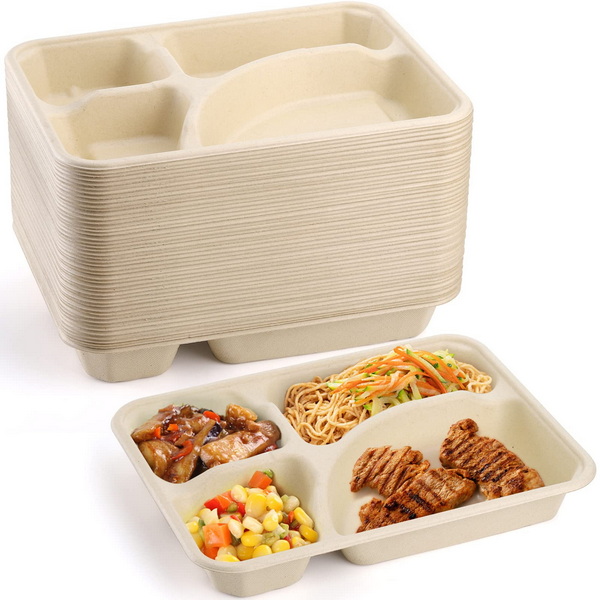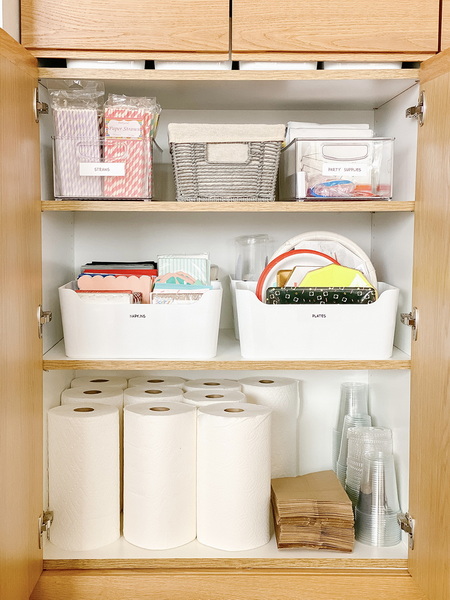
Content Menu
● Understanding Disposable Plates
● Factors to Consider for Storage
● Best Storage Practices
>> 1. Use Clear Storage Containers
>> 2. Stackable Containers
>> 3. Labeling
>> 4. Avoid Overcrowding
>> 5. Store in a Cool, Dry Place
● Creative Storage Solutions
● Storing After Events
● Hygiene Considerations
>> Benefits of Hygiene with Disposable Plates:
● Environmental Considerations
● Choosing the Right Disposable Plates
>> Material Selection
>> Size and Shape
>> Design and Patterns
● Regular Maintenance
● Detailed Comparisons Between Disposable Plate Materials
● Eco-Friendly Options Available Today
● Tips on Selecting High-Quality Disposable Dinnerware
● User Testimonials
● Conclusion
● FAQ
>> 1. What is the best way to store paper plates?
>> 2. Can I store disposable plates in the garage?
>> 3. How many disposable plates should I keep on hand?
>> 4. Is it safe to use leftover disposable plates?
>> 5. Should I label my storage containers?
When it comes to hosting events, family gatherings, or simply enjoying a casual meal, disposable plates offer convenience and ease. However, proper storage of unopened boxes of disposable plates is essential to maintain their quality and accessibility. This article will explore various storage options, best practices, and tips for keeping your disposable plates organized and ready for use.

Understanding Disposable Plates
Disposable plates come in various materials, including paper, plastic, and biodegradable options. Each type has its own characteristics and storage requirements:
- Paper Plates: Lightweight and often less durable, they can absorb moisture if not stored properly.
- Plastic Plates: More robust and waterproof, but can warp or become brittle if exposed to extreme temperatures.
- Biodegradable Plates: Made from materials like sugarcane or palm leaves, they require similar care to paper plates.
Understanding these materials will help you decide on the best storage practices.
Factors to Consider for Storage
When deciding where to store unopened boxes of disposable plates, consider the following factors:
- Temperature Control: Extreme heat or cold can affect the integrity of disposable plates. Ideal storage conditions are cool and dry areas.
- Moisture Levels: Excess moisture can cause paper plates to become soggy or moldy. Ensure the storage area is well-ventilated.
- Accessibility: Store your disposable plates in a location that is easy to access when needed, such as a pantry or utility closet.
Best Storage Practices
Here are some effective practices for storing unopened boxes of disposable plates:
1. Use Clear Storage Containers
Using clear containers allows you to see the contents without opening them. This can save time when searching for specific items.
2. Stackable Containers
Choose stackable containers to maximize vertical space in your pantry or closet. This approach keeps your storage area organized and clutter-free.
3. Labeling
Labeling containers helps identify the contents quickly. Use labels that indicate the type of plates (e.g., "Paper Plates," "Plastic Plates") and their sizes.
4. Avoid Overcrowding
Do not overstuff containers. Overcrowding can lead to damage or bending of plates, especially if they are made of paper.
5. Store in a Cool, Dry Place
A pantry shelf away from heat sources like ovens or direct sunlight is ideal. Avoid damp areas like basements unless they are climate-controlled.

Creative Storage Solutions
In addition to traditional storage methods, consider these creative solutions:
- Baskets: Use decorative baskets on shelves for easy access while adding a touch of style to your kitchen.
- Hanging Organizers: Utilize hanging organizers on the back of pantry doors for smaller items like napkins and utensils alongside your plates.
- Caddies: A portable caddy can be handy for outdoor events or picnics, allowing you to transport all necessary items easily.
Storing After Events
After hosting an event, you may have leftover disposable plates. Here's how to handle them:
- Check Condition: Inspect leftover plates for any damage before storing them again.
- Reorganize: If you have mixed types after an event, take time to reorganize them into their respective containers.
- Use Them Up: Try to use leftover disposable plates within a reasonable time frame for casual meals or future gatherings.
Hygiene Considerations
One significant advantage of using disposable plates is hygiene. Each plate is single-use, which eliminates the risk of cross-contamination that might occur with improperly washed reusable dishes. This is particularly important during gatherings where food safety is paramount.
Benefits of Hygiene with Disposable Plates:
- Sanitary Use: Each guest receives a clean plate.
- Reduced Risk of Germs: No need for extensive cleaning processes that could introduce bacteria.
Environmental Considerations
While disposable plates offer convenience, it's essential to consider their environmental impact. Many options are now available that are eco-friendly:
- Biodegradable Plates: Made from materials like palm leaves or sugarcane, these options break down naturally in compost environments.
- Recyclable Plastics: Some plastic disposable plates can be recycled after use, reducing waste in landfills.
Choosing eco-friendly options not only helps reduce waste but also aligns with sustainable living practices.

Choosing the Right Disposable Plates
Selecting the appropriate disposable plate requires careful consideration of several factors:
Material Selection
The material plays a crucial role in determining durability and usability:
- Plastic Dinnerware: Affordable and break-resistant; ideal for outdoor events.
- Paper Dinnerware: Lightweight but may not handle heavy meals well; suitable for casual gatherings.
- Bamboo Plates: Eco-friendly and sturdy; perfect for both casual and formal events.
Size and Shape
Disposable plates come in various sizes and shapes:
- Round vs. Square
- Deep vs. Shallow
Choose based on the type of food being served and the occasion's formality.
Design and Patterns
The aesthetic appeal of disposable plates can enhance your event's atmosphere. Options range from simple designs to elegant patterns that match your event's theme.
Regular Maintenance
To keep your storage area organized:
- Declutter Regularly: Remove any damaged or expired items.
- Restock as Needed: Keep track of what you have on hand so you can replenish supplies before running low.
Detailed Comparisons Between Disposable Plate Materials
Understanding the differences between materials used in disposable dinnerware can help consumers make informed choices based on their specific needs:
| Material Type | Durability | Best Uses | Environmental Impact |
| Paper Plates | Moderate | Casual gatherings | Biodegradable options available |
| Plastic Plates | High | Outdoor events | Often not recyclable |
| Bamboo Plates | Very High | Formal events | Compostable |
| Palm Leaf Plates | High | Eco-friendly events | Biodegradable |
Each material has its pros and cons depending on usage scenarios—understanding these will help ensure you choose appropriately based on both function and environmental considerations.
Eco-Friendly Options Available Today
As awareness grows regarding environmental issues associated with single-use products, many brands now offer eco-friendly alternatives that do not compromise quality:
1. Bamboo Plates: Naturally sturdy with a beautiful aesthetic; ideal for upscale events.
2. Palm Leaf Plates: Made from fallen palm leaves; fully compostable after use.
3. Sugarcane (Bagasse): A byproduct from sugar production; sturdy enough for hot foods while being biodegradable.
4. Recycled Paper Products: Made from post-consumer waste; good option if looking for paper products without compromising sustainability goals.
5. PLA (Polylactic Acid) Products: Made from renewable resources like corn starch; biodegradable under industrial composting conditions but should be verified based on local facilities available for disposal.
These options not only meet functional needs but also align with growing consumer preferences toward sustainability in everyday products used during gatherings or parties.
Tips on Selecting High-Quality Disposable Dinnerware
When choosing disposable dinnerware, consider these tips to ensure you're getting high-quality products that will perform well during your event:
1. Read Reviews: Customer feedback often highlights real-life experiences regarding durability and usability.
2. Check Certifications: Look for certifications indicating BPA-free materials or compostability—this ensures safety while also providing peace of mind regarding environmental impact.
3. Consider Thickness & Weight: Heavier-duty options generally provide better performance under load—especially important if serving heavier meals.
4. Assess Stackability & Storage Needs: Ensure chosen products stack well without sticking together—this aids both transportability as well as efficient use of space during storage!
By following these guidelines when selecting dinnerware options tailored specifically towards your needs will lead towards successful dining experiences without unnecessary hassle later down the line!
User Testimonials
Gathering insights from users who regularly utilize disposable tableware provides valuable perspectives regarding practical applications at various events:
1. *"I always opt for bamboo plates when hosting outdoor barbecues—they're sturdy enough even with heavy burgers!"*
2. *"For casual family gatherings where cleanup needs to be quick—plastic works wonders! Just toss them afterward!"*
3. *"I love using palm leaf platters during my eco-conscious parties—they add such an elegant touch while being kind to Mother Earth!"*
These testimonials illustrate how different materials serve unique purposes across diverse occasions while emphasizing user satisfaction stemming from thoughtful product selection!
Conclusion
Proper storage of unopened boxes of disposable plates is crucial for maintaining their quality and ensuring they are readily available when needed. By considering factors such as temperature control, moisture levels, and accessibility, you can create an efficient storage system that keeps your disposable dinnerware in excellent condition. Implementing best practices like using clear containers, labeling, and avoiding overcrowding will enhance your organization efforts while also considering hygiene and environmental impacts associated with disposables.

FAQ
1. What is the best way to store paper plates?
Store paper plates in a cool, dry place using clear, stackable containers to prevent moisture absorption and damage.
2. Can I store disposable plates in the garage?
Yes, but ensure the garage is temperature-controlled and dry; extreme heat or humidity can damage the plates.
3. How many disposable plates should I keep on hand?
Keep enough for two to three times your typical guest count; this ensures you have enough without overcrowding storage spaces.
4. Is it safe to use leftover disposable plates?
If the leftover plates are undamaged and clean after an event, they can be reused for casual meals but should be inspected first.
5. Should I label my storage containers?
Yes, labeling helps quickly identify contents and maintain organization within your storage area.


















